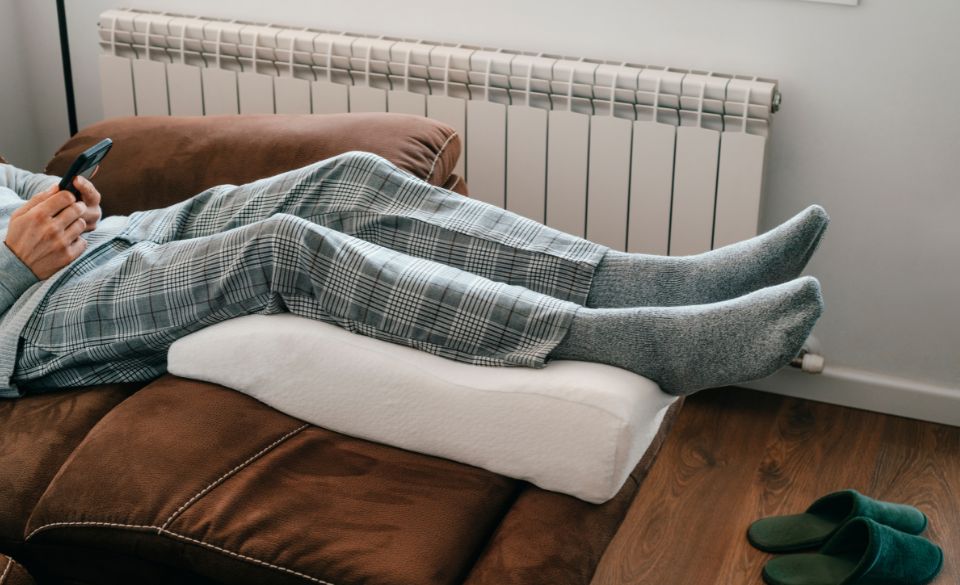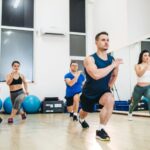
How to Reduce Leg Swelling After Exercise
Page Contents
Exercise is an excellent way to stay fit, healthy, and energized. However, some individuals may experience leg swelling after a workout, which can be uncomfortable and concerning. In this blog post, we’ll explore the causes of leg swelling after exercise and share effective strategies to reduce it, ensuring you can enjoy your workouts to the fullest.
What Causes Leg Swelling After Exercise
Leg swelling after exercise can result from various factors. One common cause is the accumulation of fluid in the lower extremities, known as edema. During exercise, your body directs blood flow to the working muscles, and this increased blood volume can lead to fluid leakage into the surrounding tissues, causing swelling.
Another contributing factor to leg swelling is inflammation. Intense workouts, especially those involving weight-bearing exercises, can cause micro-damage to the muscles, leading to inflammation. The inflammatory response may result in fluid retention and swelling as the body works to repair the affected muscles.
Furthermore, leg swelling can be related to the buildup of waste products like lactic acid. During exercise, the body generates lactic acid as a byproduct of energy production. High-intensity workouts can lead to an accumulation of lactic acid in the muscles, contributing to swelling and discomfort.
How to Reduce Leg Swelling After Exercise
If you’re experiencing leg swelling after exercise, don’t worry; there are several effective ways to reduce it and promote quicker recovery:
Cool Down and Stretch: After your workout, take time to cool down with light exercises and gentle stretches. Cooling down helps the body gradually return to its resting state and may aid in reducing leg swelling.
Elevate Your Legs: Elevating your legs above heart level can assist in reducing fluid accumulation in the lower extremities. Try lying down with your legs propped up on pillows for about 15-20 minutes after your workout.
Compression Garments: Consider wearing compression socks or sleeves during and after exercise. Compression garments apply gentle pressure to the legs, promoting better blood flow and reducing the risk of fluid buildup.
Stay Hydrated: Proper hydration is essential for preventing leg swelling. Drink plenty of water before, during, and after your workout to support circulation and flush out waste products.
Contrast Baths: Alternating between hot and cold water baths for your legs can help stimulate blood flow and reduce inflammation. Start with warm water for a few minutes, followed by cold water for a minute or two. Repeat the process several times.
Massage: Gentle self-massage of the legs can improve blood circulation and aid in reducing swelling. Use gentle, upward strokes towards the heart to encourage lymphatic drainage.
Is Leg Swelling After Exercise Dangerous?
In most cases, leg swelling after exercise is not a cause for concern, especially if it subsides within a few hours or a day. However, persistent or severe leg swelling may be a sign of an underlying issue, such as an injury or medical condition. If you experience any of the following symptoms in addition to leg swelling, consider seeking medical advice:
– Severe or prolonged leg swelling that doesn’t improve with home remedies
– Swelling in one leg only, accompanied by pain or warmth
– Skin redness or inflammation around the swollen area
– Difficulty walking or putting weight on the affected leg
– Numbness or tingling in the leg
If you’re uncertain about the cause of your leg swelling or have concerns about any accompanying symptoms, it’s always best to consult a healthcare professional for a proper evaluation and diagnosis.
Staying Mindful of Your Workout Routine
While leg swelling after exercise is usually a temporary and harmless response, it’s essential to be mindful of your workout routine and make any necessary adjustments to ensure your comfort and safety. Here are some additional tips to consider:
Gradual Progression: If you’re new to exercise or returning after a break, ease into your workouts gradually. Avoid jumping into high-intensity exercises right away, as this can increase the risk of muscle damage and inflammation.
Proper Form: Ensure that you are using correct form during exercises to minimize the strain on your muscles and joints. Improper form can lead to excessive stress and potential swelling in the legs.
Rest and Recovery: Adequate rest is crucial for allowing your muscles to repair and recover after exercise. Avoid overtraining, and give your body enough time to recuperate between intense workouts.
Warm-Up and Stretching: Warm up your muscles before each workout with light cardio or dynamic stretches. Stretching after your workout can also aid in reducing muscle tension and promoting better circulation.
Cross-Training: Consider incorporating cross-training into your routine. Mixing different types of exercises can prevent overuse injuries and give specific muscle groups a chance to rest while others are engaged.
Listen to Your Body: Pay attention to any discomfort or pain during and after exercise. If you feel persistent pain or notice unusual swelling, modify your workouts or seek advice from a fitness professional or healthcare provider.
When to Consult a Healthcare Professional
While leg swelling after exercise is often a natural part of the body’s response to physical activity, certain situations warrant medical attention. If you experience any of the following symptoms, consider seeking advice from a healthcare professional:
Severe or Prolonged Swelling: If your leg swelling is severe or doesn’t improve with home remedies and rest, it’s essential to get a professional evaluation.
Unilateral Swelling: Swelling in only one leg, especially if accompanied by pain, warmth, or discoloration, may indicate an underlying issue such as a blood clot or deep vein thrombosis (DVT).
Restricted Mobility: If your leg swelling is accompanied by limited mobility, difficulty walking, or putting weight on the affected leg, seek medical attention promptly.
Other Concerning Symptoms: Any additional symptoms such as numbness, tingling, skin redness, or skin changes around the swollen area should not be ignored.
Remember that everyone’s body is unique, and what works for one person may not apply to another. If you have any concerns or questions about your leg swelling, it’s always best to consult a healthcare professional for personalized advice and guidance.
Final Words
Leg swelling after exercise can be a common and temporary occurrence, often caused by fluid retention, inflammation, or lactic acid buildup. By following the strategies mentioned above, you can effectively reduce leg swelling and promote faster recovery after your workouts.
Remember to listen to your body, stay hydrated, and incorporate a proper cool-down routine into your exercise regimen. If you experience persistent or concerning leg swelling, don’t hesitate to seek medical advice to ensure your well-being.
Embrace your fitness journey, keep moving, and take care of your body so you can continue to enjoy the numerous benefits of exercise without discomfort.



